
Review on 🏷️ Brother P-touch CUBE Plus PT-P710BT: Versatile Label Maker with Bluetooth Wireless Technology for Smart Labeling by Ashwin Chauhan

Convenient and flexible with some moderate limitations
I bought this printer for basic product identification: things like serial numbers for the products I make. I chose it because it's wireless and tethered (if that's how you want to use it) and the Bluetooth interface allows me to programmatically generate labels, print them, and even cut them automatically. When I start making small batches of products, each requiring a unique label (due to changing serial numbers and MAC addresses), that's going to be cool. The built-in rechargeable battery does not corrode alkaline batteries and requires no replacement of rechargeable NiMH cells (and prints while charging). Brother has several other printers that don't require AA/AAA batteries, but this one comes with a rechargeable battery, while others that offer a rechargeable battery have to be purchased separately and are overpriced. The real stumbling block for other Brother plug-in powered printers was that the other variants use 12V DC connections which appear to be connected to the center negative, outer and positive terminals. That's very bad, because it means that third-party replacement power supplies have to be of that particular type, and if you accidentally plug a Brother power supply into something else that uses 12v but is connected to the almost universally accepted positive center connection standard , you can do this Blow up this device. I once allowed this, and now I will not allow centered negative power supplies in my house. Micro USB bypasses all of this; it's very standardized. I spent a day hacking into someone else's experimental Brother open source Python driver. After some effort, I can now print any monochrome PNG (provided it's the right height) on my Linux laptop via Bluetooth. It also appears to support USB communication in case you need to use it on a non-Bluetooth computer. I haven't tried the CUPS driver (but it exists) or the Windows utility. Brother publishes an excellent and detailed programmer's guide that covers pretty much everything you need to know to do even low-level printing. So I think this could be great for production or production environments on a budget. The convenience of being able to create disposable labels from my computer or smartphone is also a huge benefit (you know, the dedicated app, lol). I had a project where I needed to print hard drive serial number labels so I used a barcode scanning application to read the serial number barcodes from the hard drive labels and then copy/paste them into the Brother printing application. It sounds clumsy, but it's much more convenient and error-proof than typing in all those numbers by hand using a keyboard (whether on my phone or a label printer with a keyboard). t really a problem here. You're probably much better at typing on mobile than on a clunky keyboard to create labels, and you get perks like autocomplete, copy/paste, drag and drop WYSIWYG fonts, etc. This is great for typing a batch of labels at once to print. And it's possible to merge labels for printing to avoid the waste that usually occurs at the beginning of a single label. You still have to spend about an inch of tape for every batch job you run, but it really doesn't matter. The Brother Android app is perfectly acceptable and fairly easy to use once you've paired the printer with your phone and the app lets it discover it. It has some quirks and annoyances, but no show lasts. For example, fine-tuning the position of objects like text or images is difficult because if you move your finger just a little bit, it will think you're long-pressing on an object and suggest that you delete the object or something. You have to move the objects faster (and therefore farther than you want) for it to recognize that it's a move command, and then you have to move it back so it's closer to where you want it. And it doesn't show the object as it moves, only the bounding box, so it can be difficult to move objects exactly where you want them. I decided to check it out after dropping it on the concrete. a ladder I tripped over (I broke off most of his fall - oh!), and it still works. Weaknesses of this printer: 'saw. It's an open Bluetooth printer that anyone within range can connect to and print to. This will probably never be a real problem for me, but theoretically if I leave this on, a neighborhood kid could gobble up my entire feed of silly/offensive messages. * It will turn off automatically if left inactive on battery power. When plugged into a USB port, I think it still auto-disables, but much slower. Bluetooth should be pretty weak if done right, so it would be nice if they didn't turn it off so quickly. * It doesn't support 1.5 inch TZe band, only up to 1 inch. It's still pretty good, but I didn't realize I was narrowing my options when I bought it. * The TZe ribbon cartridge system and/or standard Brother printheads require large top/bottom margins; The printable area is smaller than desired. For example, for a 1 inch nominal/24mm actual ribbon, the printable area is 128 dots vertically or 18.06mm high. This means that a margin of at least 3mm is required at the top and bottom. This margin decreases with smaller bandwidth, almost zero on 3.5mm tape. See the Brother Programming Guide for this printer for the exact limits if this is important to you. * The print resolution is not very high, but it is in high-resolution mode. This prints at 360 x 180 dpi instead of the usual 180 x 180 dpi, presumably because the ribbon runs a little more slowly through the print head. This significantly improves the legibility of text and graphics, much like subpixel anti-aliasing improves the legibility of text. on a computer LCD screen: horizontal resolution is more important, so it's good that this measurement of resolution can be increased.
- Satisfied so far
- Negative gift
New products
Comments (0)
Top products in 🖇️ Other Office Equipment
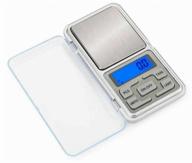
📏 Premium High-Precision Electronic Jewelry Scale MG-100 (0.01g to 100g)

10 Review

📏 Calculated Industries 6025 Scale Master Pro Digital Plan Measure Tool: Accurate Take-offs with 72 Built-in US Imperial and Metric Scales, 6 Custom Scales for Out-of-Scale Plans, Linear Measuring Made Easy!

9 Review
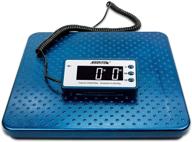
📦 Accuteck ACB440: Premium Heavy Duty Digital Industrial Shipping Postal Scale – 440lb Capacity

9 Review

Brady BMP21-PLUS Handheld Label Printer: Rubber Bumpers, Multi-Line Print, 6-40pt Font

10 Review
Another interesting products
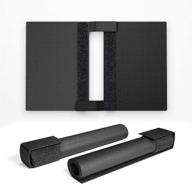
📚 CZUR Assistive Cover 13.14-inch: Splash Resistant, Adjustable Hook & Loop, PVC Material for CZUR Book Scanner - Office & Home - Black

4 Review
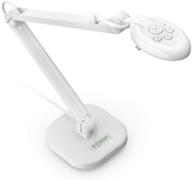
INSWAN INS 2 Dual Mode Supplemental Conferencing

3 Review
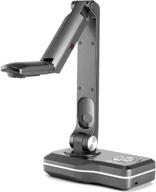
JOYUSING 8MP Document Camera for Teachers - VGA/HDMI/USB Three Mode, Mac, Windows, Chrome Compatible - Ideal for Online Teaching, Distance Learning, and Web Conferencing

3 Review
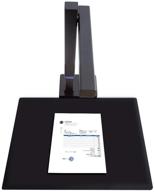
📸 CZUR Shine800-A3-Pro Professional Document Camera and Scanner with OCR Function for MacOS and Windows - Height Adjustable, Supports A3 & A4 Documents

4 Review

